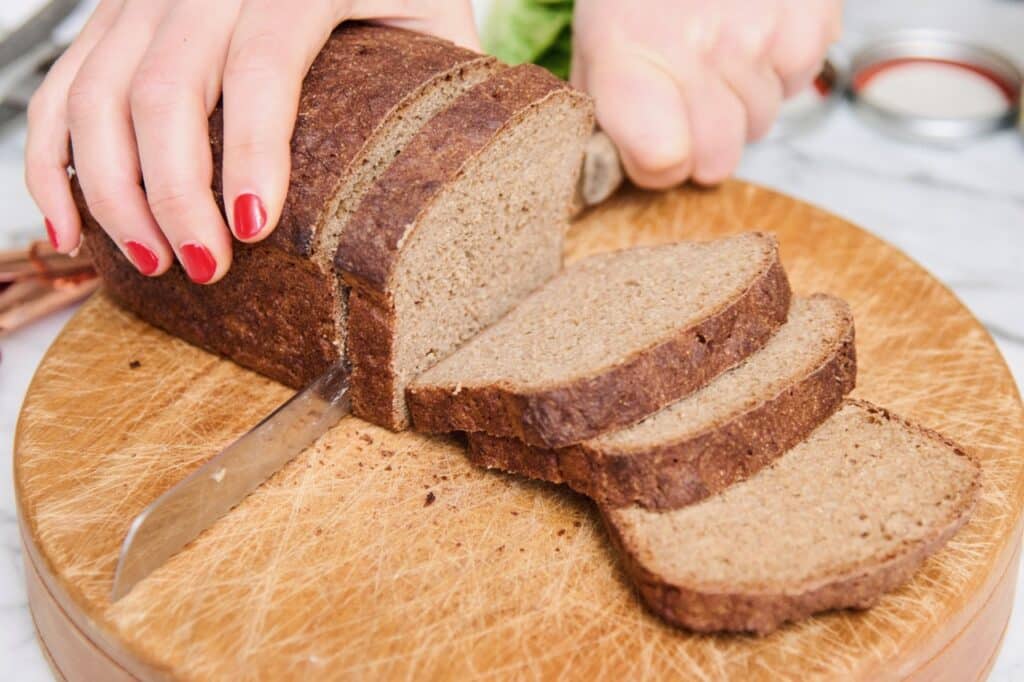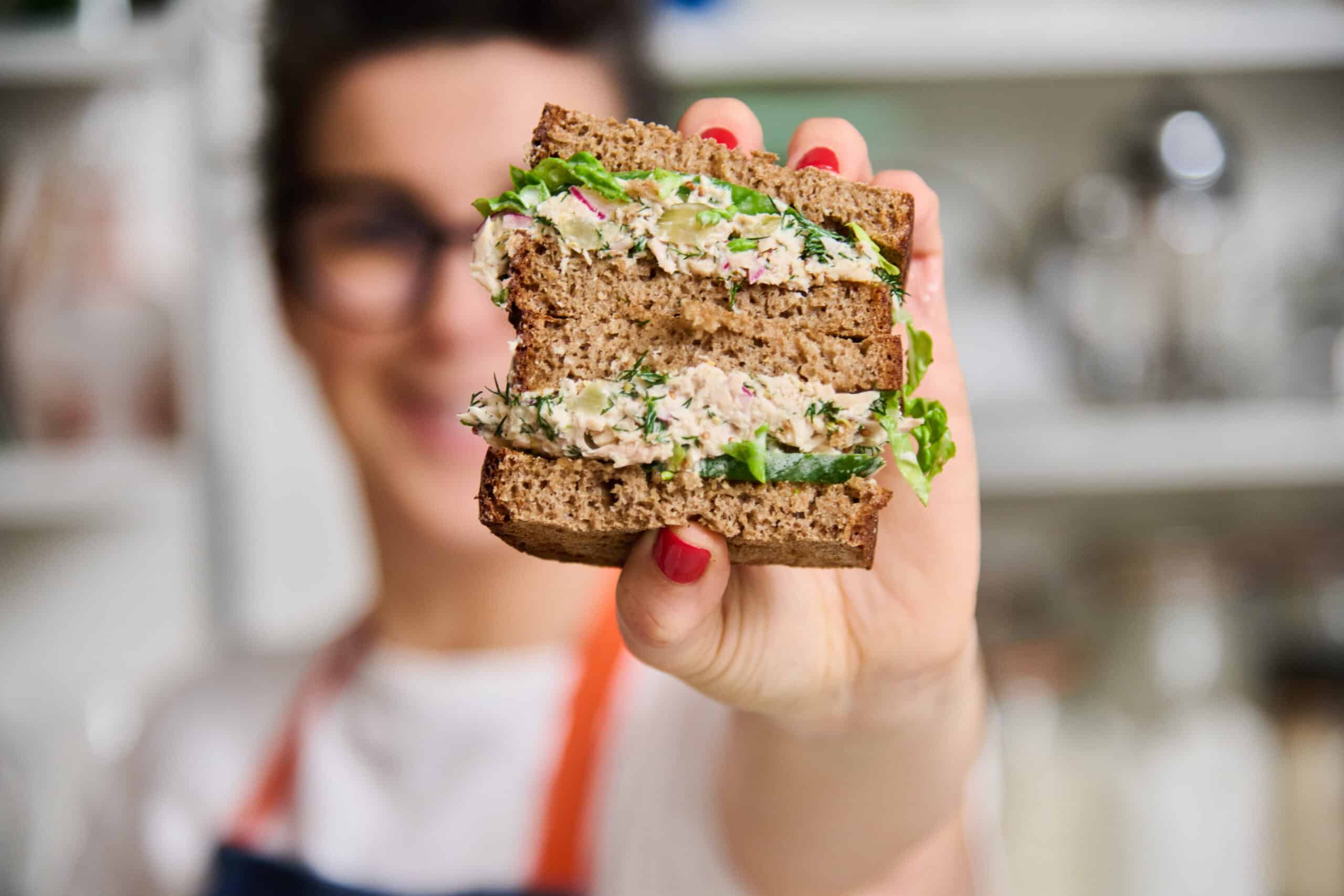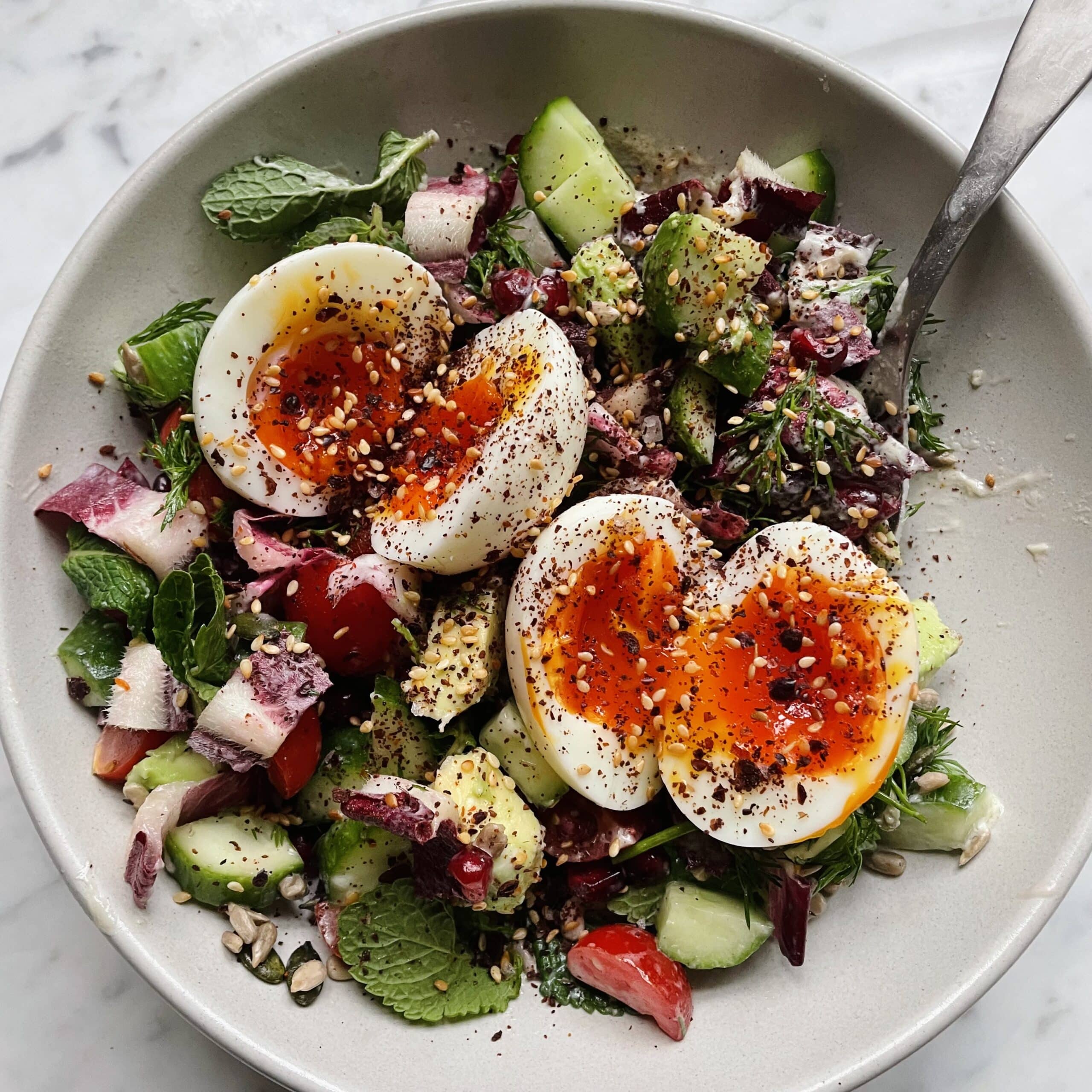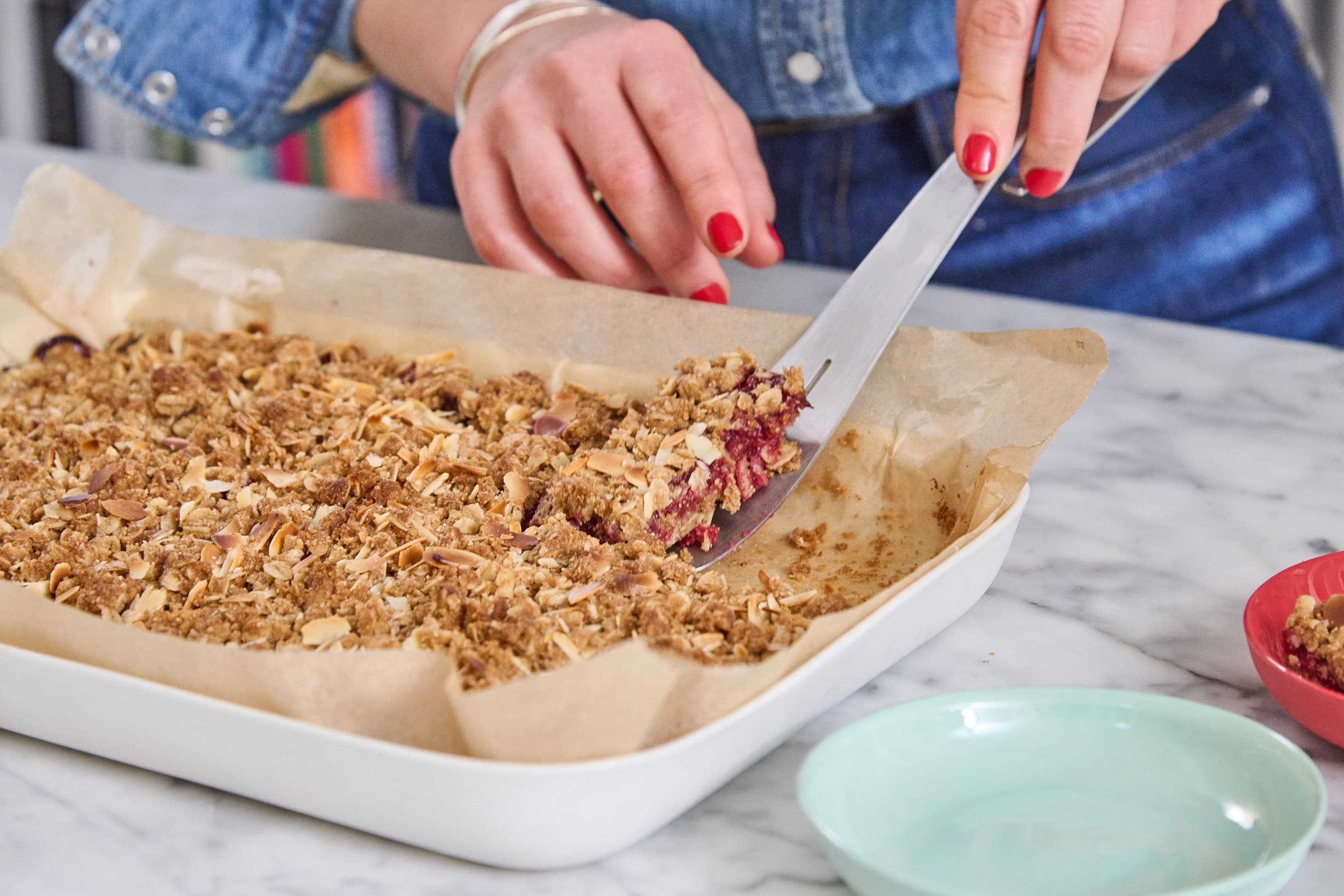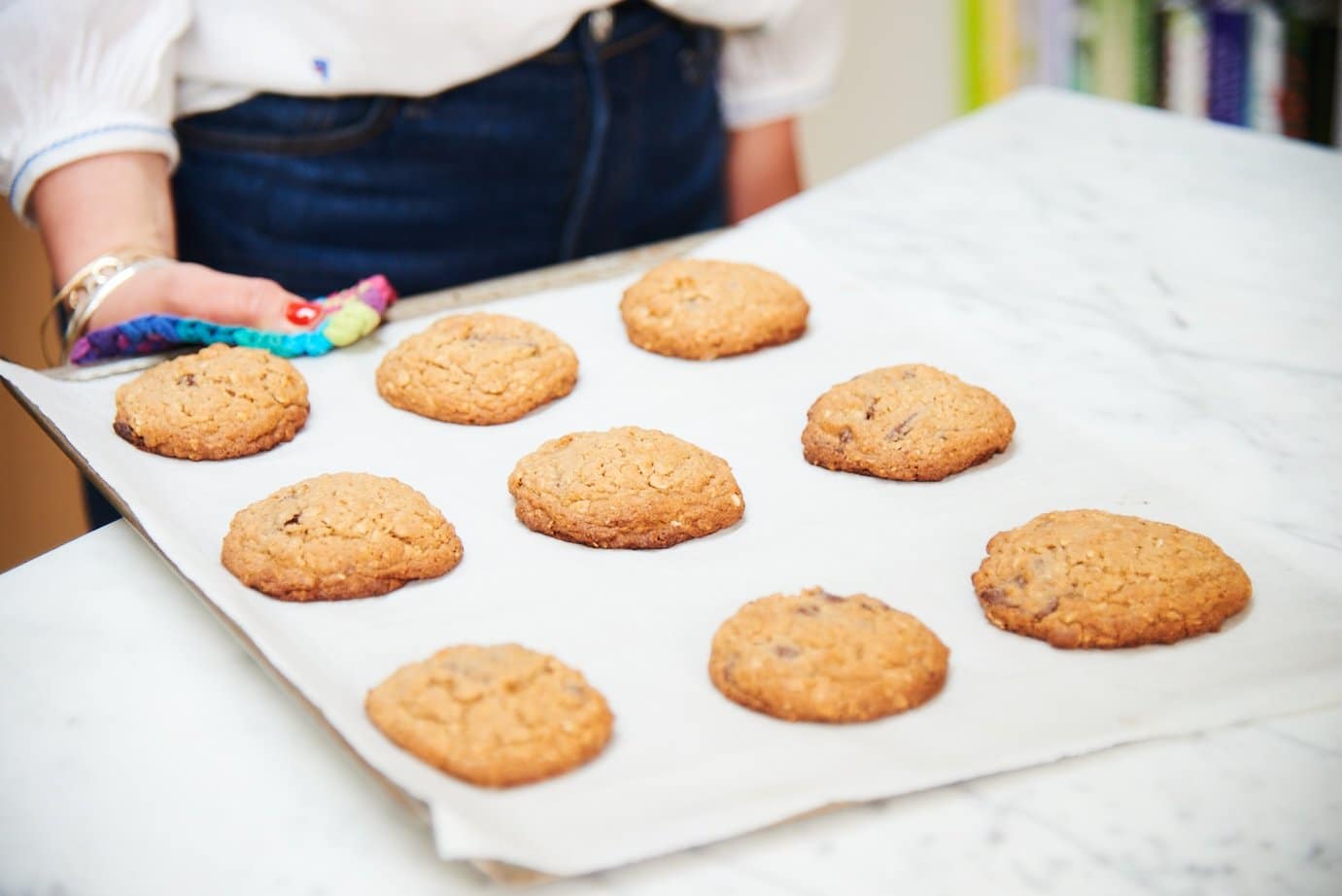Don’t look away. Don’t think, “nice idea but I don’t need a bread recipe. I will NEVER make my own”. Don’t proclaim you can’t bake bread – its way too complicated, and who has the time? You can. You will. Or at least I urge you to try.Having spent the past few years attempting, with varying degrees of (un)success to master either 100% rye, or sourdough bread, I assumed, (while eating copious amounts of this bread last month) it might also require a PhD to master. But to my utter delight I was mistaken.
Adapted from Doris Grant’s “no-need-to-knead bread loaf”, they have been making this recipe at Ballymaloe for more than 60 years. It requires no culture, no kneading, no fancy equipment for the perfect rise, and no complicated proving or turning schedule. Simply mix the ingredients, transfer the wet batter into a loaf tin, let it sit for a few minutes and bake. Out of the oven comes a wonderfully nutritious loaf of bread, ideal for both toast and sandwiches. And leaves you feeling positively smug about such a marvelous achievement.
I learned to make this bread while on our “weekend I will never forget or stop talking about” at Ballymaloe last month. One of the many privileges of staying at the house as a guest, is that you are able to wake up at the crack of dawn and bake the day’s breads and scones with the chefs. Despite a reasonable amount of local whiskey the previous evening, one of my loyal cohorts and I joined Chef Ann in the kitchens to make scones, soda breads and 15 loaves of the ‘famous brown’ for the day. The process is so quick and simple, that while at 7am we were elbow deep in dough, the finished product was ready for breakfast by 8.30.


There is no better place to either start or resume a love of bread making than with this recipe, which, time after time, will allow you to reap the satisfaction of a home made loaf, with a rich depth of flavour. Best of all slathered in salty butter.
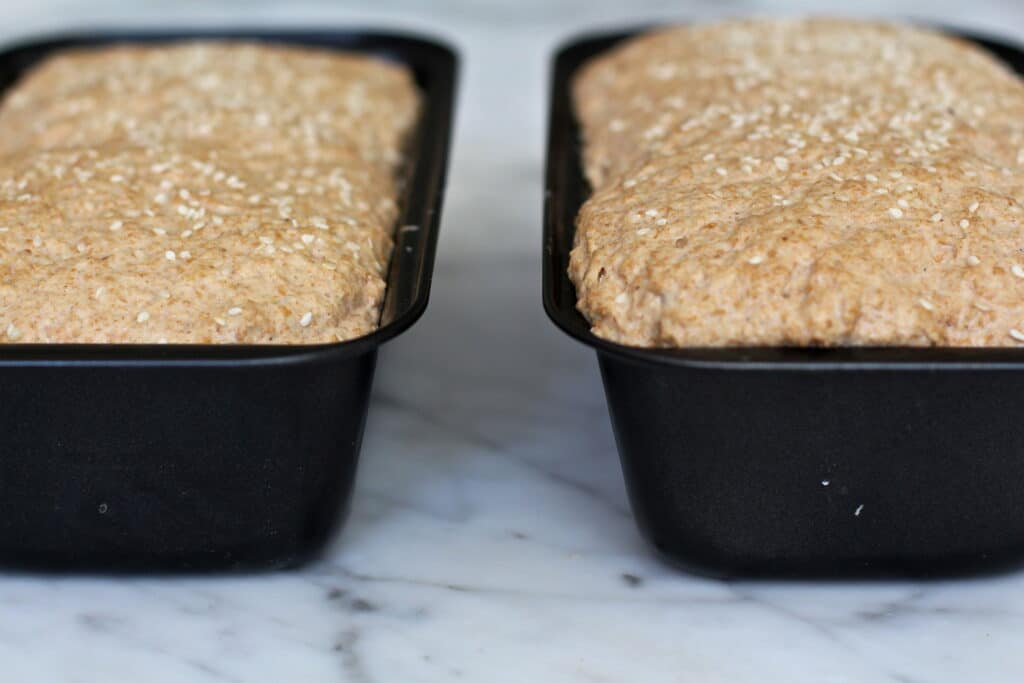
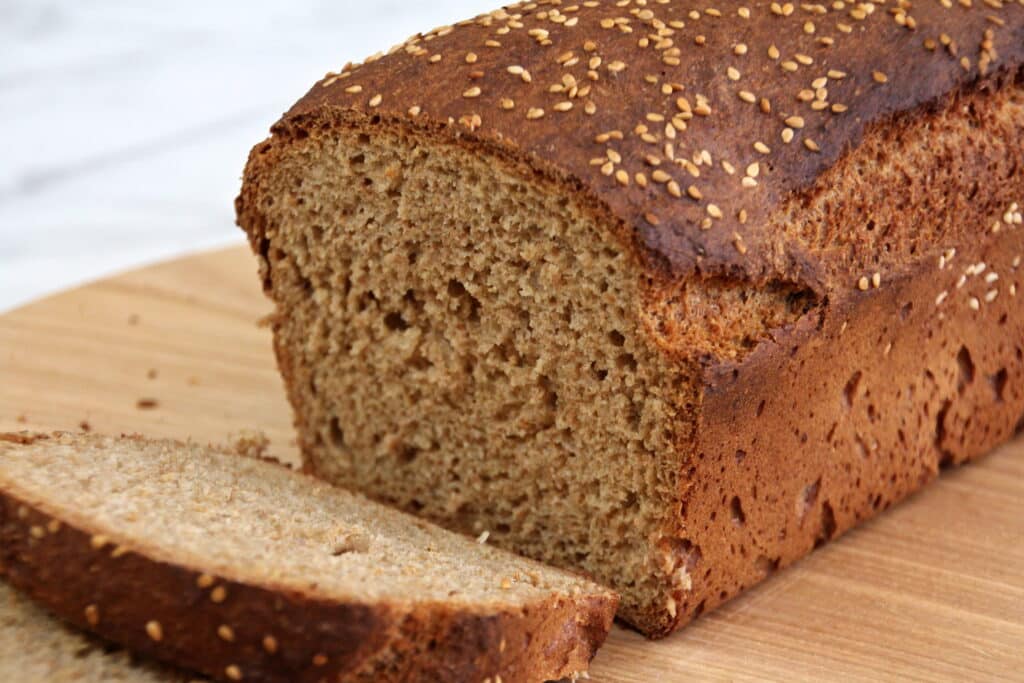
Note: This post was ready to share last week. I had written the text and photographed the last shot, when I dashed out to collect the kids from school. While waiting for them to bound out of the gates, David Lebowitzlatest post popped into my inbox, with, you guessed it, Ballymaloe Irish Brown Bread. I broke out in a sweat. How can I possibly post the same recipe as the godfather of the food blog? Well, I have decided to anyway. David, I loved your post. It explains brilliantly the difference of all the flour varieties.
Notes: This is a very sticky dough. I keep some very well loved and used non stick loaf pans for this recipe. I still have to liberally grease them with neutral oil. If you are worried about the bread sticking, line the loaf tin with parchment paper to avoid any un-moulding stress (I would hate that for you)
Feel free to double this and make 2 loaves (its the same about of work!). They freeze beautifully
To ensure a good rise in the loaf, the yeast requires a warm space. Some say that warming the flour helps, but I only think that is necessary in the middle of winter.
The type of flour you use will change the flavour and texture of the bread. A stone ground strong wholemeal flour will produce a loaf with nuttier flavour than a regular strong wholemeal flour which is more finely milled. It is worth experimenting. In the UK I like Shipton Mill and Batcheldare, but in the USA I am sure King Arthur Flour produce a good version (although I have not tried it).
They use fresh yeast in the Ballymaloe kitchens, but I never seem to have any on hand when I need it and dry yeast works well. If you have some fresh yeast hanging around this would be an excellent way to use it up…..
One 23cm (9 inch) loaf
Ballymaloe Brown Bread
- 450g strong, stone ground wholemeal flour
- 50g strong white flour
- 1 tsp black treacle (or molasses or golden syrup – all create a slightly different flavour)
- 7g (1 1/2 tsp) dried yeast (or 30g fresh yeast)
- 1 1/2 tsp kosher salt
- 425ml warm water (blood heat according to Darina Allen)
- sunflower oil (or any neutral oil) for the tin
- sesame seeds for the top (optional if you are feeling fancy)
Preheat oven to 230C/450F
In a large bowl mix the flours and sprinkle over the dried yeast and the salt. It is important that the ingredients are at room temperature. In the colder months, or if you keep your flour in a cold storage space, pop the flours in the oven when you turn it on and leave it for a few minutes as it warms up.
Mix the treacle with the hand hot water and pour over the flours and mix. It’s going to be messy and sticky. Do not attempt to knead – it should be way too wet.
Allow to sit for 5-10 minutes while you prep and liberally brush the base and sides of a loaf tin with sunflower oil (or line with parchment if you prefer).
Pour the wet batter into the bread tin, cover with a tea towel (you do not want a skin to form) and place in a warm, draft free area. Let it sit for about 15-20 minutes or until it has risen to the top of the pan (you do not want it to rise over the sides of the pan as it will keep rising when you pop it in the oven. If you are using sesame seeds, sprinkle them on top now.
Bake for 20 minutes.
Turn down the oven to 200C/400F for another 40-50 minutes until it is sounds hollow when tapped.
If, like me, you like a crustier loaf, remove the loaf from the tin 10 minutes before it has finished cooking, and pop back in the oven upside down for the last few minutes to crisp up.
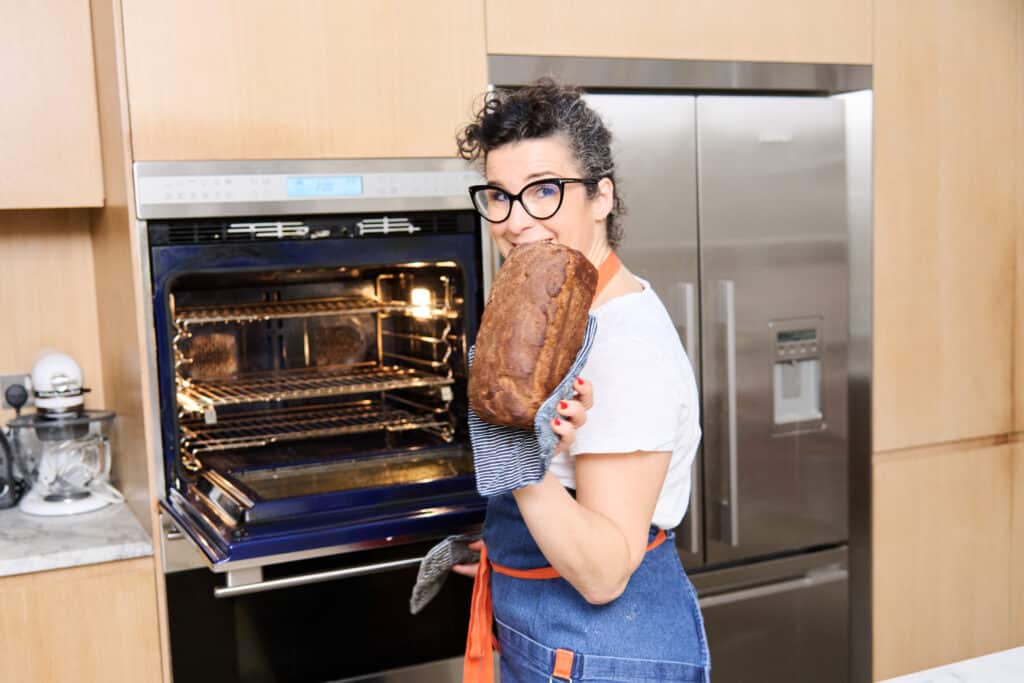
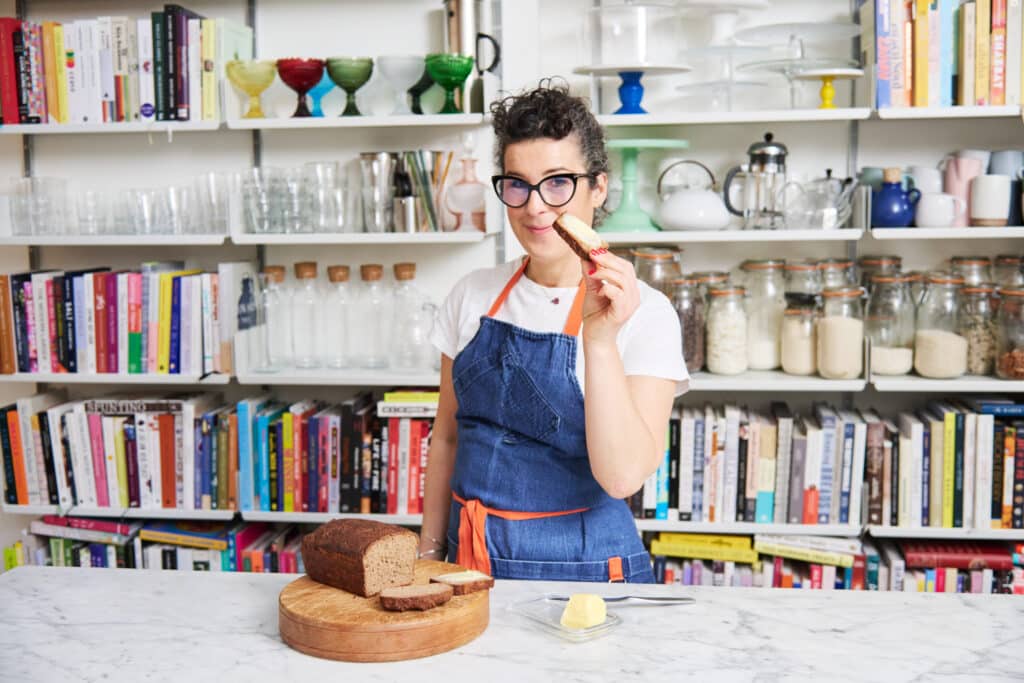
Enjoy!
Have you made this dish?
Let me know what you think, share your efforts and any tweaks you made to the recipe on Instagram, don’t forget to tag #BuildingFeasts or email me on info@buildingfeasts.com
